This week’s Q1 national accounts release from the Australian Bureau of Statistics is expected to reveal that per capita GDP declined, effectively pushing Australians back into recession after the reprieve in Q4 2024.
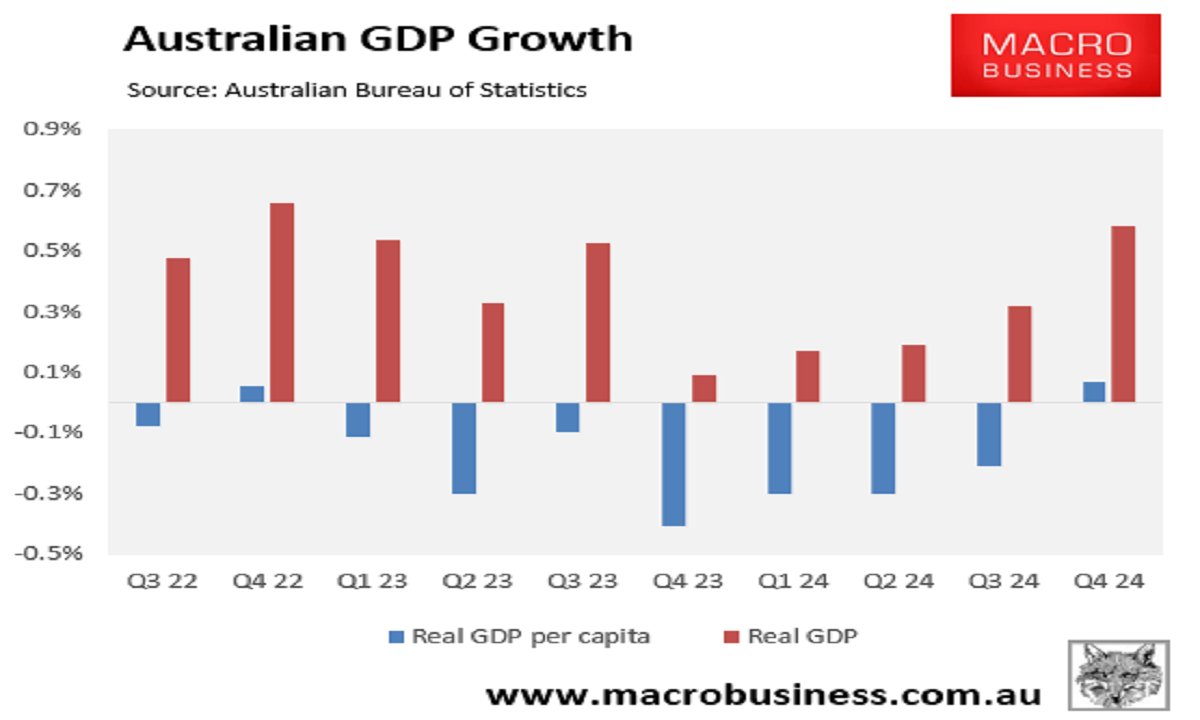
The weak result will likely be driven by household consumption, which continues to disappoint despite the Stage 3 tax cuts and falling interest rates.
The Australian Bureau of Statistics’ (ABS) Household Spending Indicator (MHSI) recorded zero growth in volumes in Q1 2025, suggesting another fall in per capita terms.
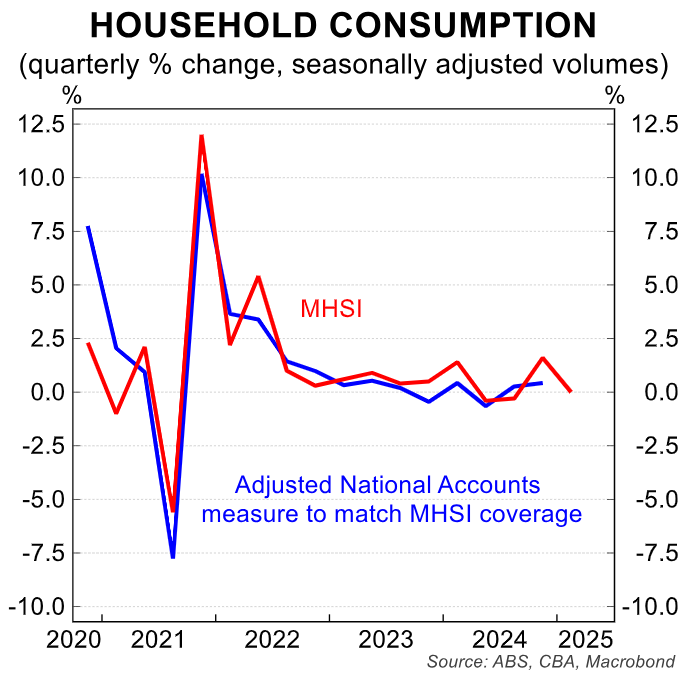
Real per capita household spending had fallen for eight consecutive quarters to Q4 2024, suggesting a ninth consecutive decline will be reported in this week’s national accounts release.

The consumer recession appears to have dragged into Q2 with Friday’s retail sales data from the RBA reporting a 0.1% fall in April, well below the consensus estimate of 0.3%.
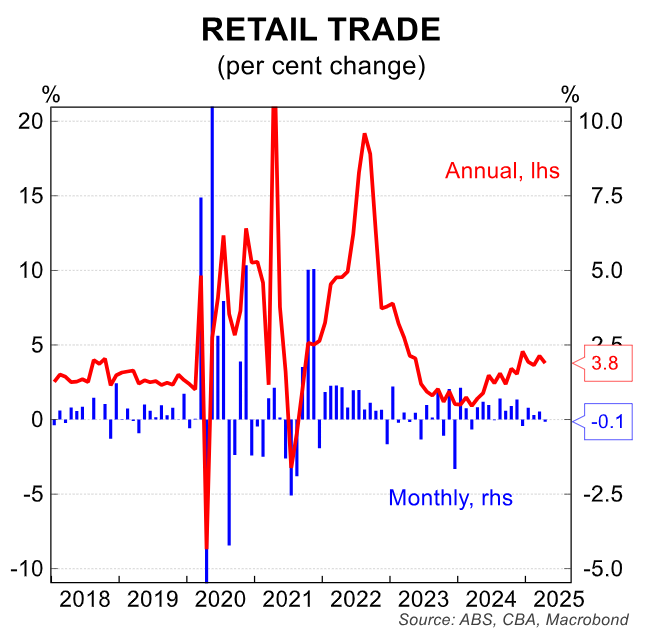
The above data is presented in nominal value terms. Therefore, it does not account for inflation or population growth.
The next chart from AMP chief economist Shane Oliver shows that real retail spending per capita has fallen heavily from its mid-2022 peak.
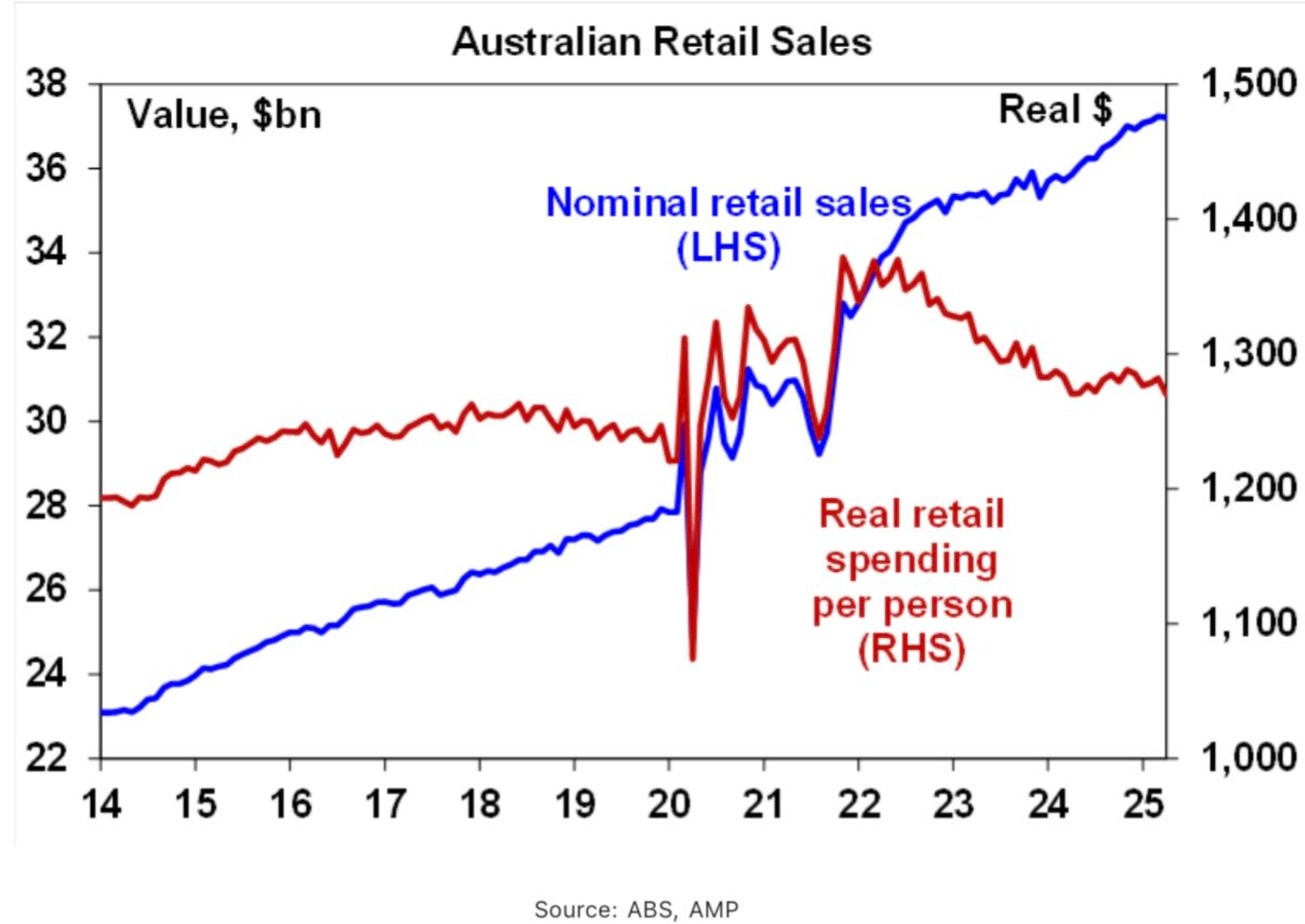
The next chart from Alex Joiner at IFM Investors likewise shows that nominal retail sales per capita was tracking just below the level of November 2022, when adjusted for the growth in the working aged population.

CBA senior economist Belinda Allen summarised the result as follows:
The consumer has been one of the most talked about aspects of the domestic economy this year. Income tax cuts and more recently interest rate cuts were widely expected to see consumers lift spending in 2025.
To date this expected recovery has been much softer than expected. The pandemic years of declining real household disposable income has appeared to have scarred households.
CBA data continues to point to a preference to save/pay down debt rather than spend. Global uncertainty is also a new headwind for consumers to overcome.
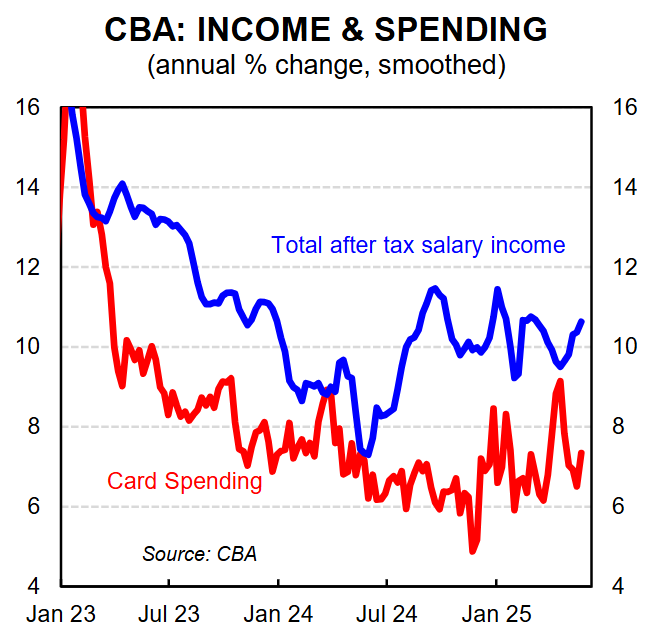
Indeed, the record 8% decline in real per capita household disposable income since mid-2022 has led consumers to tighten their budgets and reduce their spending.
Lower interest rates will obviously help by lifting disposable incomes. However, it will be a long, slow grind out of recession for Australian households.

